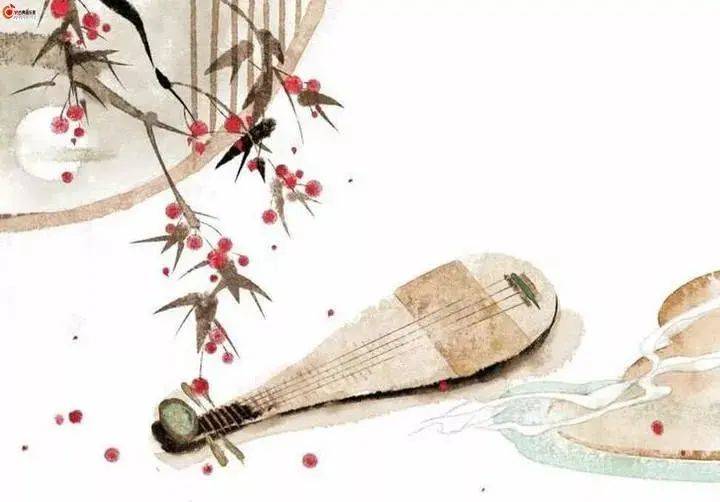The posture of playing the lute
Before playing the pipa, you must first pay attention to the playing posture, including the posture of the whole body, the posture of the left hand and the right hand.

playing posture
There are two purposes to pay attention to playing posture: first, to create suitable and convenient conditions for playing, it is necessary to place the pipa relatively stably, so that the left and right hands can better use their respective postures, angles and movement directions. a technique. Second, in order to develop a beautiful and natural playing posture and habit, to match the atmosphere created by the music.
(1) Body posture
Sitting on a chair or stool to play, the height of the chair and stool should be as high as two inches below the performer's knee (the high bone on the outside), so that the thigh surface is level. The body should be sitting upright, the shoulders should be stable, the feet should be forward, and the distance between the knees should be about half to one chi. The pipa should be placed upright on the center or left thigh. The front of the pipa is facing outwards and the back is facing inward (or the front of the pipa forms a 45-degree angle with the front of the human body, and the violin body is slightly inclined to the left front). The music score is placed more than a foot away in front of you, and your eyes are looking straight at the score. Facial expressions should be natural. The movements and postures during the performance should be natural and appropriate, graceful and generous, showing a beautiful image of vitality and spirit.
(2) Posture of the left hand
The left hand is mainly responsible for supporting the pipa, pressing sounds, and using various fingerings. The thumb is generally placed on the back of the pipa, and the food, middle, nameless, and little fingers are placed on the top of the panel. The elbows are drooping and closed when pressing the phase, the first and second frets, and parallel when pressing the third and fourth frets.
(3) Right hand posture
The left hand is mainly responsible for the task of using various fingerings to touch the strings. The palms are inward, the backs of the hands are outward, and the wrists are slightly bent. The angle between the back of the hand and the panel and the curvature of the wrist should depend on the physiological conditions of the player's hand. The five fingernails touch the string body inward, the upper arm droops to the right and the outer arm, and the forearm extends forward, generally parallel. Make a highlight to the lower right.
 渝公网安备 50010702504639号
渝公网安备 50010702504639号